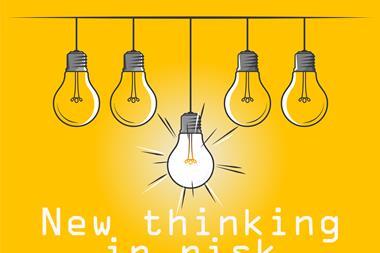If your business is pursuing a digitisation path, you should be at the forefront of it to help the people in your organisation improve the management of risk. In the first of a three-part series of columns, principal consultant at Risk Insight Consulting, Gareth Byatt, explains why.

We all know that the digital age is well and truly upon us. It pervades our professional and personal lives, and provides us with many benefits. It also presents us with downside risks to manage. Over three columns, I will explore what this means for risk teams, executives and people who manage risk in their daily operations.
All across the broad spectrum of business and commerce, organisations are moving to digitise what they do. I believe the digitisation of business provides significant new opportunities for us all to improve the way we take and manage risk and uncertainty. We need to augment the skills and techniques we currently use to help people make risk-informed decisions, with the data at their disposal and also the increasing use of artificial intelligence (AI).
For example, if you work in manufacturing and heavy industry, you can monitor data from operating equipment and facilities in real time to manage the operational resilience risk of breakages and downtime. If you work in financial trading, AI can provide you with new opportunities, through algorithms that suggest optimal trades to make at specific times.
Risk management remains largely a qualitative management practice in many industries, supported to varying degrees by quantitative analysis. Generally, the more strategic the risk, the more management decision-making tends towards being qualitative, using techniques such as scenario planning, horizon scanning and using good business acumen and judgement.
With the digitisation of commerce, a change is set to take place. The need to qualitatively review risk will remain important, but the digitisation of business now presents us with an opportunity to combine these qualitative reviews of risk and uncertainty with a data-driven approach to aide risk-informed decision-making. Those who are pursuing this path are already seeing tangible benefits.
For an example of the digitisation of business, think of the increasing adoption of the Internet of Things (IoT). The IoT is being introduced to all manner of industries and is having a positive impact on productivity and results. The IoT involves machines, equipment and goods being connected to a digital platform that permits real-time data analysis to inform actions that optimise performance.
The risk community has a great opportunity to leverage the digitisation of business and industry to enhance the management of risk, and optimise business outcomes. What does this mean for the day-to-day operations of risk professionals? Here are four activities that risk teams may consider undertaking:
1. Get involved in the strategic digital initiatives that are underway in your organisation. This means joining steering committees, taking part in design workshops and providing implementation advice;
2. Put together a plan for senior management and the board for ‘managing risk in the digital age, which is linked to the overall digitisation strategy. This must have enough detail in it to be credible, with specific benefits explained, and roles and responsibilities of what you will do made clear;
3. Liaise with data analytics teams who are reviewing data for performance improvements. You will be able to provide them with some good inputs into looking at uncertainty and how to use this data to manage risk;
4. Retool the risk team and change how members spend their time. This means planning how to devote time to data analytics and leverage data for better risk-informed decision-making. In short, work out how to transition to the digitised world.
Don’t stand on the sidelines as digitisation takes place. Take the opportunity to create a step-change in how your organisation takes and manages risk and uncertainty, with new digital platforms at its disposal, to achieve peak performance.




















No comments yet